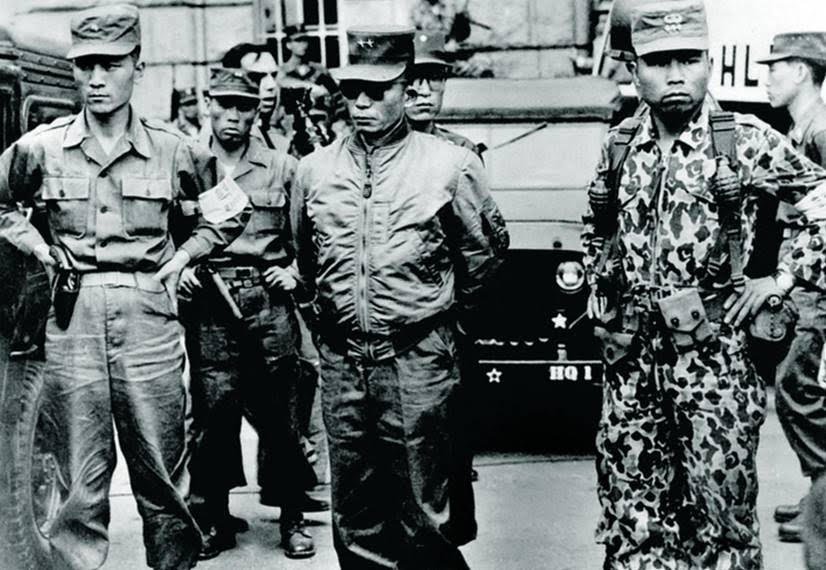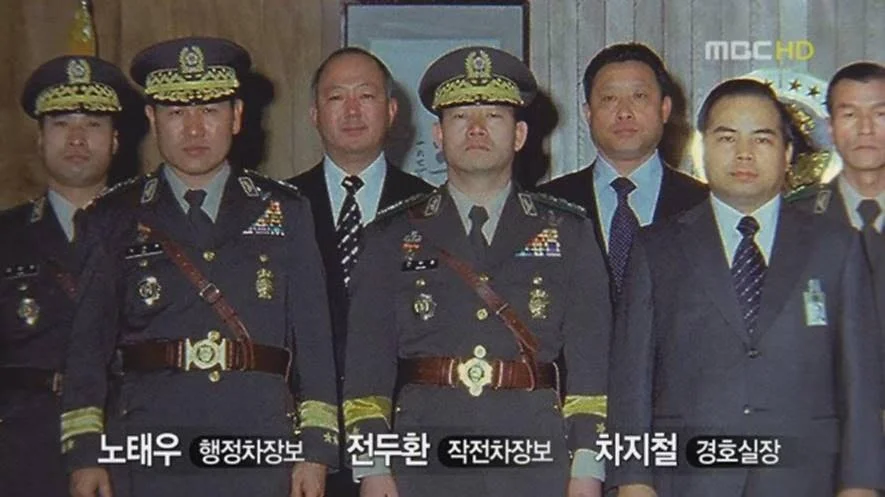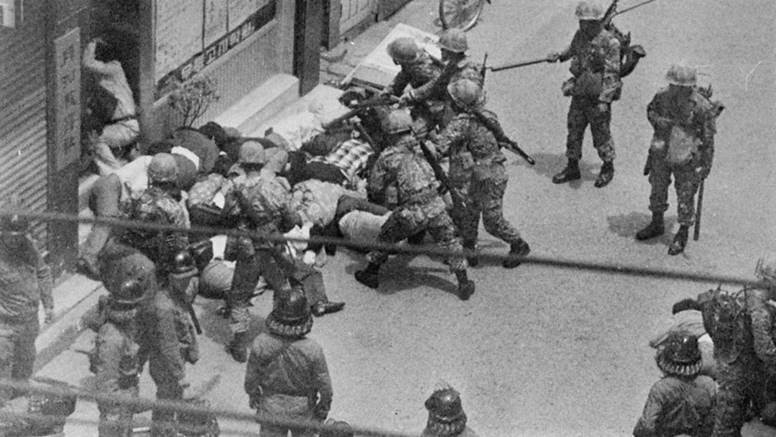By Chinedu Chukwudinma
Republished from Review of African Political Economy.
Karim Hirji, a Tanzanian student, was in a good mood when he went to bed on the 10 July 1969. That evening he had heard the most impressive lecture of his life at the University of Dar es Salaam. The lecture was on the Cuban Revolution and its relevance to Africa. Back in his dorm, he praised the speaker in his diary: “one could almost feel the strong conviction and deep emotions from which he spoke”. The man he admired and later befriended was Dr Walter Rodney. [1]
After being banned from Jamaica, Rodney settled with his family in Tanzania to teach history and political science at the University of Dar es Salaam from 1969 to 1974. He reconnected with the socialist students he had met during his first stay in 1966. In those days, Rodney helped them establish the University Students African Revolutionary Front (USARF). He ran their Marxist workshops and attended their anti-imperialist protests and talks. His connections brought the likes of CLR James, Stokely Carmichael and Guyanese politician Cheddi Jagan to speak on USARF platforms. Upon his return in 1969, Rodney was pleased to see that the USARF had gained new members. Karim Hirji was one of them. He got Rodney to write the first article for the group’s magazine Cheche on African labour (Cheche took its name from Lenin’s newspaper Iskra. Both words mean ‘spark’–in Swahili and Russian respectively). Rodney thus continued agitating for socialism on campus as he had done in Jamaica. But the political climate was now more favourable for him, as Tanzania was the mecca of African liberation. [2]
Tanzania offered hope to Rodney and many radical black intellectuals. They believed the African diaspora’s fight for freedom and equality relied on the success of anti-imperialist movements in Africa. Tanzania’s first president Julius Nyerere and his party, the Tanganyika African Nation Union (TANU) opposed imperialism as few independent African states did. Nyerere gave diplomatic and material support to every national liberation movement in southern Africa. He opened offices for the Liberation Front of Mozambique (FRELIMO) and built military bases for them. He established training camps for the paramilitary wing of Nelson Mandela’s African National Congress, uMkhonto we Sizwe, to help it fight the apartheid regime in South Africa. Living in Tanzania enabled Rodney to deepen his understanding of guerrilla warfare and international solidarity. FRELIMO fighters taught him how to shoot a rifle when he visited their camps. He also met with delegations from Vietnam, then involved in the war against the United States and organised solidarity protests with the Vietnamese on campus.
When Rodney first visited Tanzania in 1966, he witnessed Nyerere publish his program for socialism and self-reliance, the Arusha Declaration. The president had turned his African socialist philosophy known as Ujamaa—familyhood—into a policy of nationalisation of foreign companies and land reform. He aspired to increase food production through the creation of Ujamaa villages based on collective farming. Africans no longer had to rely on volatile cash crops and aid from advanced capitalist nations to make a living. Nyerere was confident that his plan suited the interest of the peasant majority. But he had yet to convince the minuscule educated elite, made up of students and state officials, to help the peasants. Back in 1964, some elitist students had shown Nyerere their disdain for work in the countryside when they protested against compulsory national service. Afterwards, Nyerere vowed to turn the university into a battleground for his progressive ideas. [3]
By 1970, Rodney stood at the heart of the debates concerning African underdevelopment that occurred almost every night at the University. In the packed auditorium, Rodney debated a TANU Cabinet Minister on Tanzania’s economic direction. He also debated the renowned Kenyan political science professor, Ali Mazuri, on why Africa should be socialist, not capitalist. His ideas, however, did not always please Nyerere. The president replied with anger to an article Rodney published in TANU’s newspaper, which argued that African leaders who served western capitalism deserved to be overthrown by the people. Nyerere disagreed and accused him of preaching violence to young people. The regime set limits on how left-wing students and academics could be. A few months later, it banned the USARF for promoting “foreign ideology”. [4]
The ban did not change Rodney’s respect for Nyerere, nor did it discourage him from sharing his radical Marxist ideas with students. He taught a graduate course on the Russian Revolution to show his African students that they could draw lessons for their own struggle from October 1917. He made parallels between present-day Tanzania and Tsarist Russia, which both had a large peasantry and a small working class. Rodney praised the Russian Revolution as the first break with capitalism, transforming the once mainly agrarian country into an industrial power in its aftermath. Bourgeois historians, he argued, sought to discredit October 1917 because it represented the victory of organised workers allied with peasants over their class. [5]
Rodney had begun a monograph on the Russian Revolution in 1971, but he never finished it because he had more urgent matters at hand. He wanted to use Marxist theory to address the issue of African underdevelopment.
How Europe Underdeveloped Africa
Rodney’s involvement in debates concerning African underdevelopment in Tanzania inspired him to write his most influential book, How Europe Underdeveloped Africa. He was concerned that most African nations had not broken ties with the old colonial powers in the decade after colonialism. They had achieved political independence, but their economies remained in the hands of European and American companies. They remained poor and reliant on foreign aid because the Western ruling class stole their natural wealth (land, oil etc.) for its benefit, with help from African leaders who served them. Yet, many African intellectuals still believed that trade deals, loans and investment from advanced capitalist countries would benefit African development. Rodney sought to convince them to the contrary.
His book, published in 1972, revealed that European intervention in Africa, through the slave trade and colonialism, stifled African development. It told how the European ruling class robbed Africa of its wealth, which contributed to Europe’s prosperity and industrial growth. Rodney examined Africa’s relationship with Europe from 1500 to 1960 to elucidate the present. He opened the preface with his message for the future: “African development is only possible on the basis of a radical break with the international capitalist system” which had underdeveloped Africa for centuries. [6]
Rodney’s skilful use of Marx’s historical method in his book uprooted Africa from the colonial myths surrounding its past. In Chapter One, Rodney dismantled the racist idea that Africa stood outside progress by defining development as a universal and multifaceted process. As Marx and Engels did before him, he understood development as being rooted in how human beings cooperate to provide the necessities of life out of nature. He explained that when people found better ways to produce wealth by working together, they developed new forms of cooperation, new ideas and changed the form of their society. Rodney showed a sophisticated understanding of development, arguing that it did not unfold as a linear process but rather was uneven across continents and regions, as sometimes the people who defended old forms of cooperation and ideas stopped those attempting to modernise production, delaying societal change for years to come. [7]
Rodney dedicated the second chapter to portraying Africa’s development before Europeans arrived in the 1500s. Far from being outside of progress, Africa displayed formidable advances in agriculture, science, and art. Most societies at the time were small classless ones with low levels of production, where people had equal access to land and evenly shared resources. Africa, however, developed more hierarchical societies that resembled Europe’s feudal states in places like Ethiopia, Egypt, and Zimbabwe. In these unequal societies, a ruling class owned the land and appropriated the surplus created by the exploited peasants. Rodney argued that underdevelopment was never the absence of development. It was not inherent to Africa and its people, but the historical consequence of capitalist expansion and imperialism. [8]
By the 16th century, Europe developed at a faster pace than Africa and the rest of the world, transitioning from feudalism to capitalism. Rodney argued that European powers demonstrated their superiority in maritime and armaments technology. They opened West Africa for trade with their ships and canons and transformed it into a supplier of slaves for their plantations in America and the Caribbean. In the third and fourth chapter, Rodney explored the consequences of the transatlantic slave trade on African development by engaging in the debate concerning the number of African captives. He opposed Philip Curtin’s tally that counted only 10 million enslaved from 1500 to 1870. “Because it is a low figure it is already being used by European scholars who are apologists for the capitalist system and its long record of brutality”. [9] Rodney explained that Curtin’s toll failed to measure the whole tragedy because it only relied on records of slaves’ arrivals in America. The number of victims went far beyond 10 million, as some captives were smuggled, and millions more never left Africa. They died in the wars fought over slaves and more captives perished during the long journeys from the interior of Africa to the coast as well as the so-called ‘Middle Passage’ the journey across the Atlantic.
After he established the horrific magnitude of the slave trade, Rodney explained how it underdeveloped Africa. He showed that the trade stunted Africa’s demographic growth. As European powers kidnapped able young men and women, Africa lost those of childbearing age who performed the most arduous tasks on the land. With fewer people at hand, many African societies struggled to harness nature and develop. Moreover, Rodney argued that Europe’s demand for slaves made slave raiding and wars commonplace in West Africa. Societies that had hitherto coexisted in peace now turned on each other to acquire more slaves. Violence instilled fear and insecurity among Africans. It disrupted the organisation of agriculture, mining, and commerce that they had established over centuries. It destroyed crops and artisanal trade turning farmers into soldiers, and soldiers into slaves. This disruption of farming and trade even impeded the development of African regions that were not involved in the slave trade.
While the slave trade stalled and reversed African development, it contributed to Europe’s capitalist development. Rodney demonstrated that the slave trade generated enormous profits for the Portuguese, British and French empires, making fortunes for countless bourgeois merchants and plantation owners. Its wealth and magnitude gave rise to the infamous ports of Bristol, Liverpool, Nantes and Bordeaux. He explained how the profits and goods accrued from the exploitation of African slaves in the New World fuelled Britain’s Industrial Revolution. A century ago, Karl Marx had made the same point when he wrote, “without slavery there would be no cotton, without cotton there would be no modern industry”. [10] At the end of chapter four, Rodney explained how colonialism emerged out of the imperialist stage of capitalism in the late 19th century. Rivalries between European capitalist firms assumed the form of a competition between nation-states for control over the world’s markets, natural resources and trade routes. Africa, which had been weakened from centuries of slave trading, fell victim to Europe’s violent colonial conquest. European ruling classes justified this conquest with racist ideology, as they claimed to be civilising savage people by converting them to Christianity. Thus, by 1900, they had divided the entire African continent into colonies. [11]
In the fifth chapter, Rodney analysed colonialism (1885-1960) as a cruel and exploitative system, whereby the European bourgeoisie extracted wealth from African workers and peasants. He assessed the oppression and suffering of African workers at the hands of the colonial state. The state ensured that Africans often worked under forced labour, while their European counterparts could freely sell their labour. Even those Africans who were able to choose their employer received miserable wages for endless hours of work. Colonial rule was even worse for the African peasant. Rodney showed how the colonial state confiscated their land through severe taxation, evictions, and warfare. It forced some peasants to abandon food production for export crops that were sold cheap. Moreover, peasants suffered at the hands of trading companies and their middlemen who offered miserable prices. Rodney, however, did not simply illustrate the horrors of colonialism. He provided case studies of multinational companies, like Unilever, and the enormous profits they acquired from robbing Africans. Moreover, he described how Africa’s contribution to capitalism went beyond monetary returns. Its raw materials supported Europe’s advancement in electronics, metallurgy and chemistry and other industries, which stood at the centre of Europe’s capitalist development in the 20th century. [12]
In the final chapter, Rodney attacked the racist idea that colonialism had benefits for Africans because the colonisers built railroads, schools and hospitals. All the roads and railways, he said, went from the plantations and mines to the coast to ship raw materials to Europe, never to encourage trade between different regions of Africa. The infrastructure that colonialists built served to entrench Africa’s unfavourable position in the world economy, as a precarious supplier of raw materials and a free market for European finished products. The colonialists had no interest in providing health care and education to Africans. Rodney established the grim tally of five centuries of Portuguese colonisation:
The Portuguese had not managed to train a single African doctor in Mozambique, and the life expectancy in Eastern Angola was less than thirty years. [13]
Rodney’s historical account received support from Tanzania’s radical socialist minister A M Babu who clarified Africa’s present predicament in the postscript. “Foreign investment”, the minister wrote, “is the cause, and not a solution, to our economic backwardness.” [14] Investment went into projects designed to exploit African labour and raw materials for the benefit of the Western ruling class, never into health care and education. At best, foreign investment made fortunes for the few African leaders and businessmen, who partnered with western states and multinationals. But it failed to uplift the masses from poverty. Babu and Rodney advocated a revolutionary path to development, aimed at breaking Africa’s dependence on imperialist powers and empowering the workers and peasants. What would that path look like? Initially, Rodney thought that Nyerere’s socialism offered an answer to that question.
Chinedu Chukwudinma is a socialist activist and writer based in London. He writes on African politics, popular struggles, and the history of working-class resistance on the continent and is a member of ROAPE’s editorial board.
Notes
Karim Hirji, The Enduring Relevance of Walter Rodney’s How Europe Underdeveloped Africa (Mkuki Na Nyota, 2017).
Karim Hirji, Karim, Cheche: Reminiscences of a Radical Magazine. (African Books Collective, 2010), p.29.
See Mattavous, Viola, 1985, “Walter Rodney and Africa”, Journal of Black Studies, pp. 115-130. and Amzat Boukari-Yabara, Walter Rodney (1942-1980): Itinéraire et Mémoire d’un Intellectuel Africain, PhD thesis, (Centre d’Études Africaines CEAf, EHESS, 2010) pp.351-362.
Karim Hirji, 2010, p.95.
Rodney, 2018, p.76.
Walter Rodney, 2012, How Europe Underdeveloped Africa (Pambazuka Press, Cape Town, 2012), p.xi.
Rodney did not see development as a linear process. Although it was a general trend, it was uneven across continents and regions. As sometimes, the people who defended old forms of cooperation and ideas stopped those attempting to modernise production, delaying societal change for years to come. See Rodney, 2012, pp.7-10. For Marx’s historical materialist method, see Karl Marx, and Friedrich Engels, The German Ideology (Lawrence & Wishart, 1970) pp.42-60.
Rodney, 2012, pp.3-70.
Rodney, 2012, pp.96.
Karl Marx, Karl, Letter from Marx to Pavel Vasilyevich Annenkov (1846).
Rodney, 2012, pp.75-145.
Rodney, 2012, pp.149-201.
Rodney, 2012, p.206.
Rodney, 2012, p.284.
















